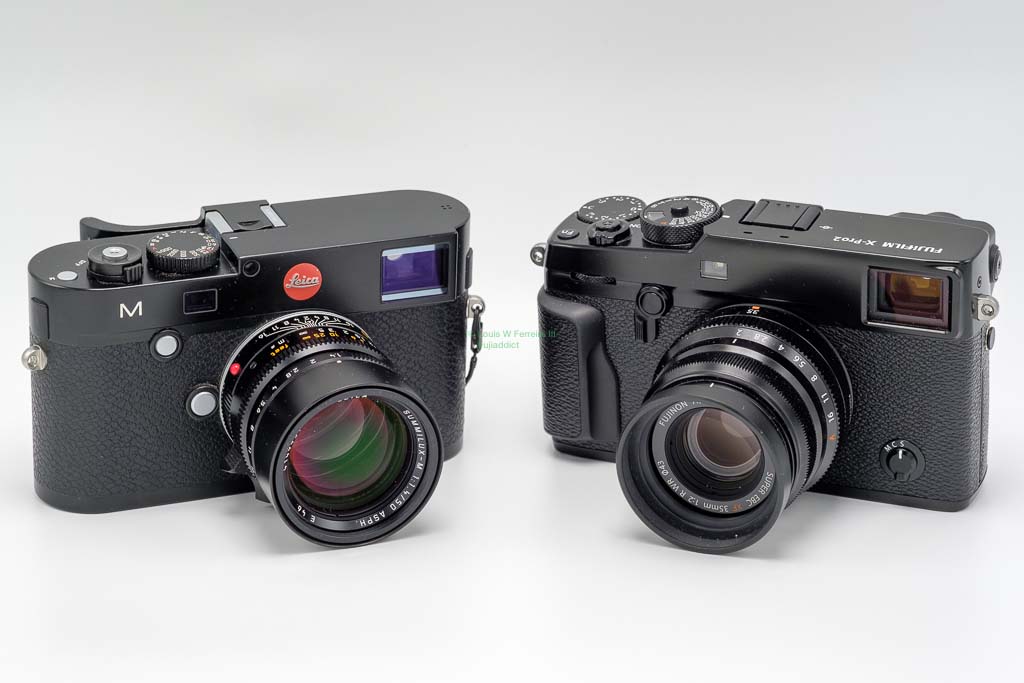
I have long been a Leica M fan starting with my Leica M3 in the 1980s and ending my journey in frustration with the M240 largely due to the introduction of the Fujifilm GFX100 which made an M impossible for me to justify, but Leica is catching up. I know Fujifilm’s audience has grown a lot since the launch of the X100 and X-Pro1, but those cameras made the X mount what it is today and many that bought in were Leica owners and people that couldn’t justify the expense of a Leica M.
Fujifilm has always done well among Leica enthusiasts because they emulated a lot of what photographers love about the Leica M while providing a modern take. I used to meet with Leica semi-regularly when I was writing for Leicarumors and Leica was aware of the similarities, but unconcerned even as I watched many Local M photographers I knew jump ship for Fujifilm. They were also aware of the value proposition a camera like the Sony a7R provided, but they argued there was no need for the resolution among other things.
It’s been more than a few years now since I gave up on Leica, but it seems Leica is finally ready to catch up and remain relevant in many ways just as Fujifilm seems to be abandoning the Leica philosophies that built the brand. The new Leica M11 should be able to rival the Sony a7RIV and even the Fujifilm GFX50 line of cameras with Leica’s 60MP BSI sensor that offers 14 stops of dynamic range. Leica is even doing something innovative with their new 60MP sensor offering a 36MP 15 stop mode that uses pixel binning that could be very useful for photographers that prefer enhanced dynamic range over resolution while still getting a decent size file with a base ISO of 64.
Don’t get me wrong Fujifilm is still continuing to impress me with innovative cameras like the X-Pro3, but the new rear screen wasn’t well-received by many and the camera seems to be intentionally low volume with Fujifilm showing no intention of offering discounts, plus it was announced in 2019. Personally, I would love to add the X-Pro3 to my bag if it matched the X-T4 price point, but I feel like Fujifilm is getting a little greedy just like Leica was when they offered the M with an outdated sensor. Now the issue for me becomes do I want to use a large heavy GFX camera that’s getting further from operational perfection with each iteration or do I want to go back to the M again and enjoy the experience. Honestly, I am not sure and I will have to wait and see what Fujifilm does about the GFX50R line of cameras since I find the GFX50S II and GFX100S completely unappealing and now own several tens of thousands of dollars of GFX glass in addition to a $9,999 GFX100 body.
There is something about the whole exposure triangle analog experience that cannot be replaced by an algorithm and multifunction programable buttons. Fujifilm photographers that pick the X-Pro3 largely understand the importance of this experience, but they wanted it in a more modern camera than Leica was willing to make and now it seems that is starting to change in the Leica world. If you have never had this kind of experience you owe it to yourself to borrow or rent an M camera and see for yourself, but it will take time to adjust too. As for me, I am patiently waiting to see where Fujifilm GFX goes, I enjoy my GFX100, but I wish it was more like the GFX50S which I love and miss almost as much as my M.
Follow Fujiaddict on Facebook, Twitter, Instagram, and YouTube
Plus our owners’ groups
Fujifilm GFX Owners Group
Fujifilm X-H Owners Group
Fujifilm X-T Owners Group
Fujifilm X-S Owners Group
Fujifilm X-Pro Owners Group
Fujifilm X-E Owners Group
Fujifilm X-A Owners Group
Fujifilm X100 Owners Group
